The City Forester is Counting on You!

Trees are a critical component in the resiliency and health of a city, and also for those who call that city “home.” Whether it’s lending charm to a shady street, shielding people and plants in the parks from the summer sun, or even stepping up to fight climate change, we really do count on Denver’s trees.
But did you know we also count them? There are more than 338,000 trees being tracked in the Treekeeper inventory kept by the Office of the City Forester today. This is a huge undertaking, and partly why we count on residents like you to help keep Denver’s trees growing strong.
From looking out for destructive pests, to learning to identify disease, to assessing and reporting structural damage, there are a few simple steps you can take to keep any tree problems from – ahem – branching out and taking root.
“The earlier we hear about a tree in need, the better. This is why having residents keep an eye out is so important. We couldn’t do this without dedicated residents who care about the urban canopy,” said Mike Swanson, Denver’s City Forester.
What the Pros Know
When Denver’s urban foresters are out surveying the city’s trees, we take a few first steps to assess overall conditions. We’re sharing some of these steps with you. A simple first-pass visual survey might include your asking questions such as:
– Does the tree look like you think it should?
– Does the tree show signs/symptoms of pests? Look out for holes in the trunk, branches, or leaves, defoliation, or oozing.
– Are there structural defects or damage? Look out for broken branches, trunk wounds, or branches lacking leaves
– Is there enough mulch?
– Is there yellowing/browning or even curling leaves in young trees?
– Is there progressive browning at the tips of branches downward, known as dieback?
If you still have concerns, you can dig a little deeper:
– Check the branch for flexibility, the hallmark of a healthy tree.
– Do a scratch test by taking your thumbnail to a young branch to see if it reveals green beneath – if it does, that tree is still living.
– Look out for common bacterial diseases, such as fire blight in fruit trees, which may present as dead branches, water-soaked blossoms and dried-up fruits.
When to Seek Help
With newly planted trees, it’s important to keep an eye on any changes that seem out of the norm. During the growing season, it’s easy to tell because leaves won’t be doing well. You may see abnormal growth such as larger or smaller than normal leaves, yellowing or browning, curling, or even no leaves. To help determine if your free tree needs attention, the quickest way to get help is to email us at tree@denvergov.org.
For larger trees, it may need to be brought to the attention of city forestry inspectors, especially when it’s obstructing important things like street signage or stoplights. Do you see hanging broken branches? Report the tree to 3-1-1 and issue will be routed to an inspector.
Trees are resilient. They can physically compartmentalize a lot of their bumps and bruises and heal many of their own wounds. But some issues can be difficult to bounce back from. This is why your best bet is to prevent damage before an incident harms the tree beyond repair. Most importantly, call a licensed tree-care professional if you need help, to increase the chances of a good outcome.
By keeping a watchful eye on Denver’s tree health, you’re taking care of an urban canopy that takes care of us. Together, we can preserve the beauty and benefits of trees…they’re counting on us!

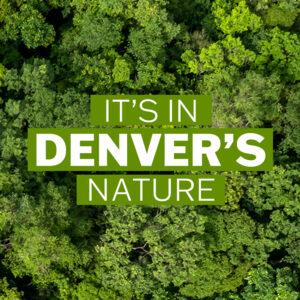 In 2022, Denver Parks & Recreation and their partners planted over 4,200 trees throughout the city, focusing on areas with the greatest need. But that wasn’t all. Learn more about
In 2022, Denver Parks & Recreation and their partners planted over 4,200 trees throughout the city, focusing on areas with the greatest need. But that wasn’t all. Learn more about  Spring cleaning. Some of us look forward to this annual ritual. Others, not so much. However you choose to look at it, this annual tidying up – and wiping down – of our homes is not only good for our physical health, it’s also a good way to take care of our mental health. Plus, a good cleaning makes a space ready for whatever comes its way.
Spring cleaning. Some of us look forward to this annual ritual. Others, not so much. However you choose to look at it, this annual tidying up – and wiping down – of our homes is not only good for our physical health, it’s also a good way to take care of our mental health. Plus, a good cleaning makes a space ready for whatever comes its way.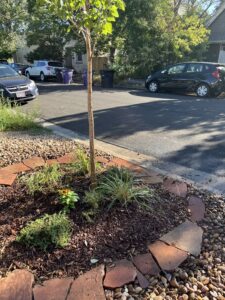

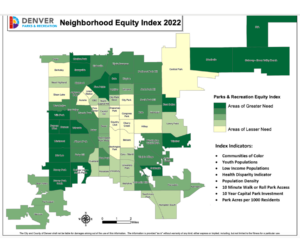
 As we all prepare our homes and gardens for winter, Denver’s Office of the City Forester urges residents to think about the trees and
As we all prepare our homes and gardens for winter, Denver’s Office of the City Forester urges residents to think about the trees and 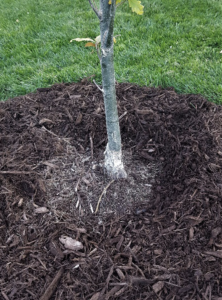
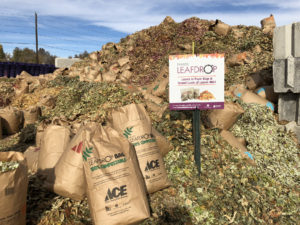 2022 has been a hot one. But the good news is, autumn is
2022 has been a hot one. But the good news is, autumn is 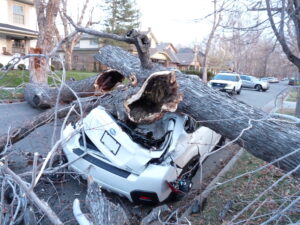 Try as we might to keep them well and reaching for the sky, sometimes we simply have no choice but to say goodbye to our strong, shady friends. Simply put, trees don’t live forever. And tree removal – while sad to see – is an expected part of the natural lifecycle. The “whys” of tree removal can vary greatly, but there are some rules that stand firm. One thing you’ll hear our foresters say often is “right tree, right place”. This simple reminder also serves as a starting point for the list of reasons a tree might need to be removed. Here are the top five reasons:
Try as we might to keep them well and reaching for the sky, sometimes we simply have no choice but to say goodbye to our strong, shady friends. Simply put, trees don’t live forever. And tree removal – while sad to see – is an expected part of the natural lifecycle. The “whys” of tree removal can vary greatly, but there are some rules that stand firm. One thing you’ll hear our foresters say often is “right tree, right place”. This simple reminder also serves as a starting point for the list of reasons a tree might need to be removed. Here are the top five reasons: 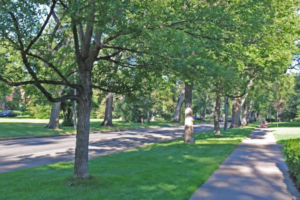 Hey, we get it – it’s easy to think “the more the merrier” when it comes to trees. But planting any tree in the public right-of-way (areas between the curb and sidewalk or next to the street), isn’t always good for the future of our urban canopy.
Hey, we get it – it’s easy to think “the more the merrier” when it comes to trees. But planting any tree in the public right-of-way (areas between the curb and sidewalk or next to the street), isn’t always good for the future of our urban canopy. 